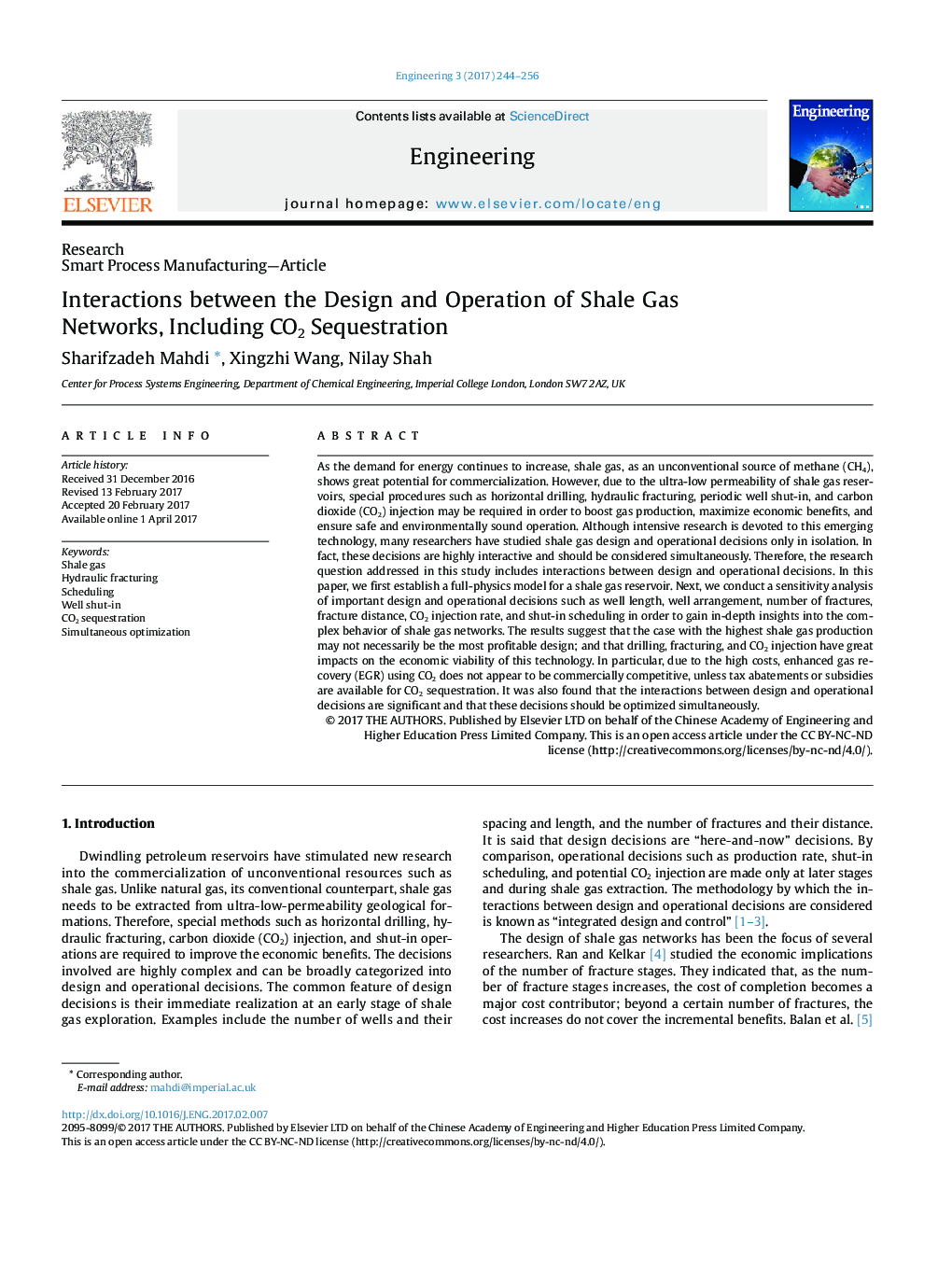| Article ID | Journal | Published Year | Pages | File Type |
|---|---|---|---|---|
| 4959247 | Engineering | 2017 | 13 Pages |
As the demand for energy continues to increase, shale gas, as an unconventional source of methane (CH4), shows great potential for commercialization. However, due to the ultra-low permeability of shale gas reservoirs, special procedures such as horizontal drilling, hydraulic fracturing, periodic well shut-in, and carbon dioxide (CO2) injection may be required in order to boost gas production, maximize economic benefits, and ensure safe and environmentally sound operation. Although intensive research is devoted to this emerging technology, many researchers have studied shale gas design and operational decisions only in isolation. In fact, these decisions are highly interactive and should be considered simultaneously. Therefore, the research question addressed in this study includes interactions between design and operational decisions. In this paper, we first establish a full-physics model for a shale gas reservoir. Next, we conduct a sensitivity analysis of important design and operational decisions such as well length, well arrangement, number of fractures, fracture distance, CO2 injection rate, and shut-in scheduling in order to gain in-depth insights into the complex behavior of shale gas networks. The results suggest that the case with the highest shale gas production may not necessarily be the most profitable design; and that drilling, fracturing, and CO2 injection have great impacts on the economic viability of this technology. In particular, due to the high costs, enhanced gas recovery (EGR) using CO2 does not appear to be commercially competitive, unless tax abatements or subsidies are available for CO2 sequestration. It was also found that the interactions between design and operational decisions are significant and that these decisions should be optimized simultaneously.
